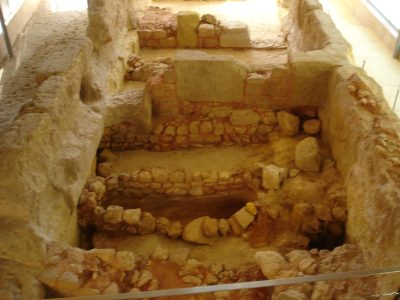
Phoenicians and Punics have been considered, by traditional historiography, as a civilization of merchants and navigators interested mainly in trade and exchange with the indigenous populations of the central-western Mediterranean, due to their indefatigable search for metals and other raw materials. However, and beyond the well-known wars that pitted the Greeks and Romans against the Carthaginian armies, this civilization played a fundamental role in the introduction, diffusion and development of military architecture and poliorcetic techniques of the Eastern and Hellenistic tradition in the Mediterranean West. Our research will focus on defining which defensive, architectural, tactical and poliorcetic elements or approaches are to be related to the installation, in different regions of the central-western Mediterranean, of population contingents of “Phoenician”, read Tyrians, Sidonians, Syrians, Israelis, Cypriots etc., or North Africans, mostly Carthaginians or inhabitants of the territory of Carthage. The broad chronology of our research (9th-2nd centuries BC) makes it necessary to divide it into different periods in order to identify the evolution of the different elements and approaches mentioned above. Once these are defined, it will be possible to proceed to the analysis of the indigenous defensive systems of cultures such as the Numidian, the Libyan, the Elymian, the Sicana, the Sardinian, the Balearic or the Iberian with the aim of observing the Phoenician-Punic influence on their defensive systems and the type of siege warfare practiced by these communities. The construction of fortifications is irremediably linked to the generation of tensions and/or conflicts within the framework of the different historical processes derived from the Phoenician colonization and subsequent Carthaginian military expansion. In our investigation we will try to discern what political, military, social or economic factors contributed to the construction of a Phoenician-Punic defensive system or its influence in a specific geographical region during a specific historical period. The purpose of our study is to reassess the importance of the Phoenician-Punic civilization in the diffusion and innovation of poliorcetic concepts in the ancient Mediterranean and to place it in its rightful place alongside the Greeks and Romans.
Project funded by the Ministerio de Ciencia e Innovación, the Unión Europea-NextGenerationEU, the Plan de Recuperación, Transformación y Resiliencia and the Agencia Estatal de Investigación.






